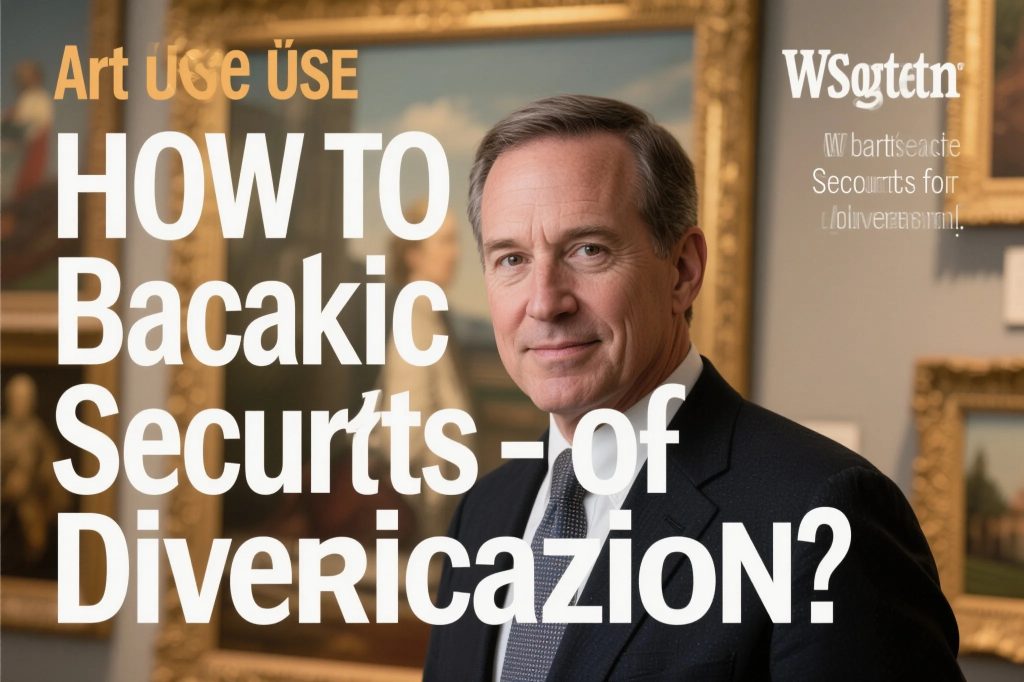
In today’s rapidly evolving financial landscape, many high-net-worth individuals and institutional investors are seeking new ways to achieve true portfolio diversification. Traditional vehicles like stocks and bonds, while still critical, often exhibit increased correlation in times of economic stress. This has prompted a growing interest in art securities, a niche yet increasingly popular form of alternative investment. By unlocking the value of fine art through securitization, investors are now able to integrate tangible cultural assets into their financial strategies in a way that balances risk and reward.
The Rise of Art-Backed Investment Products
Fine art has historically served as a store of value for the elite. From Renaissance paintings to contemporary pieces by Basquiat or Banksy, art’s capacity to appreciate over time is well documented. However, art was long considered an illiquid, exclusive asset class—accessible primarily to connoisseurs and collectors. That changed with the emergence of asset-backed securities in the art market, which allow fractional ownership in high-value artworks.
These financial instruments work similarly to mortgage-backed or other securitized assets. An artwork is professionally appraised and placed in a trust or legal vehicle. That entity then issues shares—essentially units of ownership—which are sold to investors. The art itself serves as collateral, creating a structure where art securities become part of a broader financial toolkit. The security can then be traded, providing investors with exposure to the art market without requiring them to own, store, or insure the physical piece.
Why Art Appeals as a Diversification Strategy
Art has long demonstrated a low correlation with traditional asset classes like equities and fixed income. This makes it a compelling candidate for portfolio diversification, especially for those employing a HNW strategy. During times of market volatility, or when inflation erodes the value of currency, tangible assets like fine art have historically preserved wealth. The emotional and cultural value of art is unaffected by central bank decisions or interest rate shifts, giving it a distinct advantage in certain macroeconomic environments.
Moreover, art often appreciates during periods of economic recovery, mirroring trends seen in real estate and collectibles. Sophisticated investors are increasingly viewing art securities not just as decorative indulgences, but as functional components of a diversified investment framework. Platforms offering securitized artworks give access to a curated selection of pieces with historical performance data and professional market analysis, improving transparency and risk management.
Understanding the Mechanics of Art Securitization
To invest wisely, one must understand how these financial products are structured. The artwork in question is typically acquired by a managing entity—often a fintech platform or private equity firm. After a formal valuation, the artwork is placed in a legal entity such as a special purpose vehicle (SPV). This entity isolates the artwork from other business operations and ensures that it remains independent of corporate liabilities.
Once securitized, shares are offered to investors through a private placement or public offering, depending on regulatory classifications. These shares represent partial ownership of the asset-backed vehicle. Investors may earn returns from appreciation, periodic dividends (if the art is leased to museums or exhibitions), or capital gains upon eventual sale. Liquidity is improving as secondary markets develop, though these securities are not yet as liquid as traditional equities. Still, they offer a unique combination of yield potential, diversification, and cultural cachet.

Risk Considerations and Mitigation Strategies
No investment is without risk, and art securities are no exception. Market volatility, fraud, valuation subjectivity, and illiquidity can all pose challenges. The value of an artwork may be influenced by changing tastes, cultural relevance, and the macroeconomic climate. Authentication and provenance are also critical—fake or misattributed pieces can destroy investment value.
To mitigate these risks, savvy investors turn to platforms that employ third-party appraisers, art historians, and blockchain-based provenance tracking. Legal safeguards, such as insurance and independent custodianship, are also essential. Those utilizing an HNW strategy will often allocate a smaller percentage of their total portfolio to art-backed assets, treating them as complementary to more traditional holdings.
Technological Advancements in Art Investment
The digitization of the art market has expanded access and improved data transparency. Blockchain technology, for instance, allows for immutable records of ownership and provenance. Smart contracts can automate payouts, governance, and transfers of ownership. These innovations reduce transaction friction and build trust—two essential components for any successful alternative investment.
Fintech platforms are also curating art portfolios using data analytics and AI-driven trend forecasting. These tools help identify pieces with the highest potential for appreciation, offering investors more than just gut instinct or historical anecdote. While traditional gallery sales remain a cornerstone of the art world, the intersection of technology and finance is making the market more democratic, efficient, and investment-ready.
Integrating Art Securities into a Holistic Portfolio
True diversification requires exposure across a variety of asset types, geographies, and risk profiles. Including art securities in a well-balanced portfolio offers a hedge against volatility while introducing a novel risk-return profile. They may be especially useful in mitigating exposure to cyclical sectors or foreign currency fluctuations.
For those following an HNW strategy, family offices and private wealth managers are beginning to include securitized art funds in their offerings. These funds are often structured similarly to hedge funds or REITs, with expert management and performance-linked fees. They provide curated access to the art world’s most prestigious names, without the complexities of individual ownership.
Tax and Estate Planning Implications
Art securities can play a role in advanced tax strategies. Because they are typically classified as asset-backed securities, they may offer deferral opportunities on capital gains. Additionally, high-net-worth investors can leverage trusts and charitable donations to reduce estate tax burdens. Donating securitized shares of art to a qualified nonprofit may result in a deduction equal to fair market value, provided certain IRS requirements are met.
Furthermore, art-backed assets can be more easily transferred across generations when compared to physical artworks, which often require complex appraisals and logistical arrangements. In this way, art securities not only serve the goals of growth and diversification but also long-term legacy planning.
The Cultural and Emotional Value of Art Ownership
Beyond financial returns, investing in art brings emotional and cultural satisfaction. For many investors, participation in the art market is about more than ROI—it’s about preserving heritage, supporting creativity, and connecting with cultural narratives. Securitization doesn’t diminish these elements; it broadens access and invites a more diverse set of participants into the fold.
Many alternative investment vehicles lack the narrative richness of art. Whether it’s owning a share of a Picasso or backing a rising contemporary artist, the emotional connection can enhance investor experience and satisfaction. As the line between financial strategy and personal identity continues to blur, art-backed investments offer a rare fusion of both.
Conclusion: The Future of Art in Financial Markets
The world of art securities is still emerging, but its trajectory is promising. As financial instruments become more inclusive and culturally connected, the demand for novel assets like these will likely grow. Investors looking for meaningful diversification—beyond the standard menu of stocks, bonds, and REITs—should strongly consider the unique role that asset-backed art can play.
Whether you’re a seasoned investor exploring an HNW strategy, or a newcomer to alternative investment markets, art securities offer a rare blend of beauty, stability, and financial potential. Their integration into mainstream portfolio strategies could well mark the next phase in the evolution of wealth management and cultural capital.